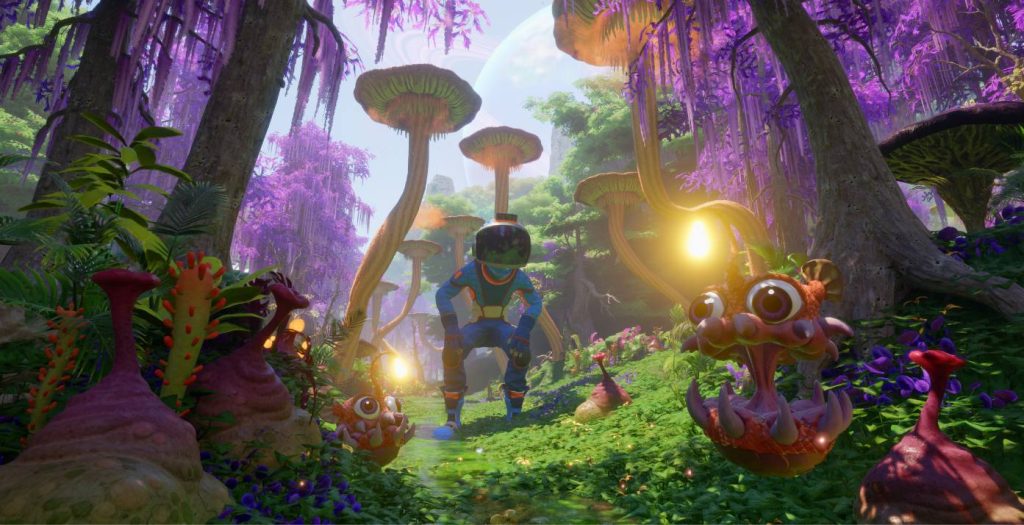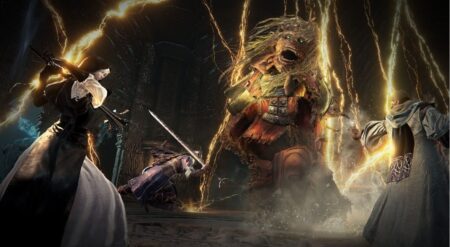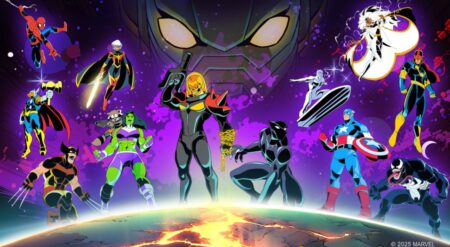Who amongst us hasn’t wanted to get back at the company that laid us off? Shine a light on their indiscretions, sue them, you know, the works. In Revenge of the Savage Planet, you play a scientist who has just woken up from cryosleep. When you went to sleep, you were on a century-long mission to colonize new planets in the name of Kindred Aerospace. But when you wake up, you’re now an employee of ATLA, and you’ve been labeled redundant. yup, you’ve been laid off.
Self-published and developed by Raccoon Logic, Revenge of the Savage Planet is a sequel to 2019’s Journey to the Savage Planet. The first game was originally developed by Typhoon Studio (under Google) and published by 505 Games. Raccoon Logic is the games studio former Typhoon Studio developers created after Stadia Games and Entertainment closed it. This makes the anti-capitalist humor at the center of the game feel more authentic than all the right things a company thinks its players want to hear.
That personal touch when it comes to the dialogue and situational humor helps it tap into the core of all of us who have been laid off once, or twice, or, you know what, you get it. The official game synopsis captures the game’s theme better than I could:
“In a future knocked off its axis by corporate greed and stupidity, you have been made redundant and abandoned on the far edge of space with little gear and no safety net. You must explore every nook and cranny, collect dozens of upgrades, and turn over every mysterious alien rock if you want to get revenge on your former employer and return to Earth.”
In the current climate, it would have been enough for the developers to rest on their concept and well-written humor. The humor permeates research logs, character exchanges, and live-action videos shot for the game that deliver much-needed exposition with a capitalist grin. This game is pure comedy gold in every single element.
Revenge of the Savage Planet taps into the universal need to get revenge on your boss.
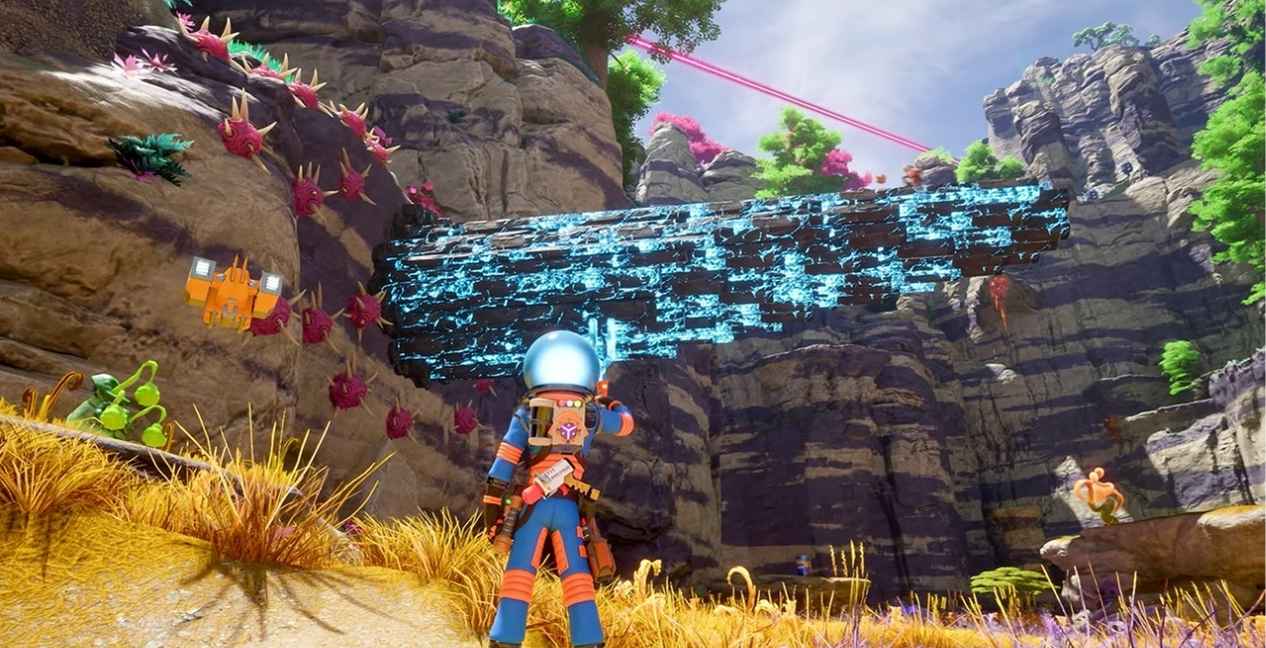
Still, what makes Revenge of the Savage Planet stand out is how creatively the game’s mechanics get. Easily described as a 3D Metroidvania, platforming is king in this game, and it’s pushed farther by its environmental puzzles, too. The worlds you explore aren’t static. Whether you’re using different elemental goo to break down barriers or summoning large obelisks out of a wall with a tuning fork, platforming and puzzle solving is a tactile one.
There are ultimately five planets for you to explore, and each one tackles a different biome and aesthetic, populated with diverse creatures that range from purely unique to the same fuzzball you just saw, but if they adapted to a different climate.
While not every creature you encounter is entirely unique, this allows you to have some solid footing when you enter a new planet. You may not know what the new enemies do, but you do know you kick the fuzzball and can’t kick a larger beetle. This doesn’t mean that every planet in Revenge of the Savage Planet is too similar. While the game’s flora and fauna are built on the same foundations, how you interact with them changes based on what the platforming and puzzles for those planets require.
Every new skill you learn allows you to explore the planets in layered progressions. Without a gas mask, you can’t explore the toxic swamp on the starter planet. If you’re missing the ability to hold \ bombagranates (grenades from a plant), you won’t be able to 100% complete the exploration of any planet. This is a game that implores you to double back. More importantly, it doesn’t put up any guardrails in doing so.
Revenge of the Savage Planet offers up a sequel that’s even better than the first.
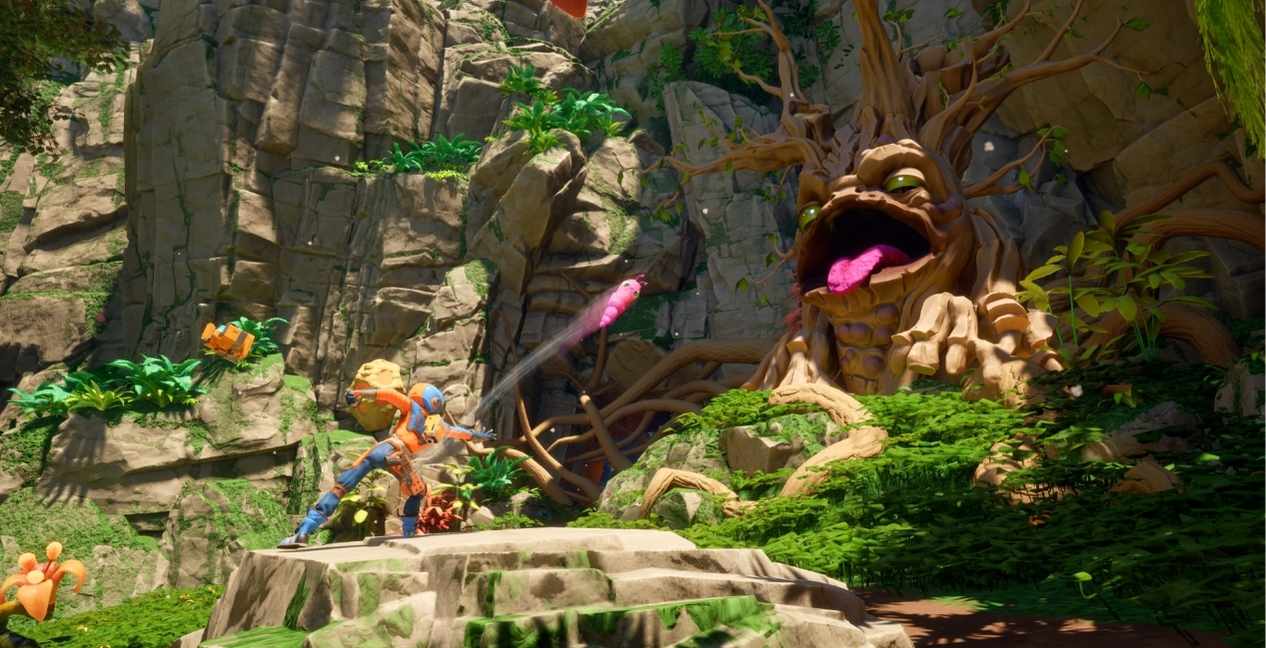
Revenge of the Savage Planet doesn’t make everything solvable the moment you shoot yourself out of the Planet Cannon (yes, the literal cannon that sends you to a new world). Instead, it lays everything in front of you and asks you to see what you can solve and make a note of what could help you in the future. But for any intrepid explorer, there are some moments where you can progress or solve a puzzle for a reward without the right skill unlocked. Your drone sidekick even comments on it, just so you know.
In that way, Revenge of the Savage Planet encourages its players to get creative, explore, and take their own time as they move through the planets. Creativity really is the calling card for this sequel. Platforming and larger traversal mechanics hit the right kind of tactile balance between action and result. You can be speedy or methodical, but the planet’s puzzles facilitate both. No matter what, you have to be thoughtful.
Using your scanner frequently to catalog the planet is always for your benefit. The inventive ways the development team has envisioned the creature descriptions highlight their passion for the worlds they’re bringing to life. Every inch of the planets we played with in the hands-on preview was worth reading about and laughing about, too.
The survey tool is your best friend in Revenge of the Savage Planet. While the scanner will help you find information about the flora and fauna of the area, the survey tool pulls up small icons that denote essential things you need to find or interact with to proceed in your exploration. As you start to slam your head against a wall, which can be finding the path to a snowy peak or the right pathway up a broken tree to collect equipment, the survey can save you.
The survey tool is your best friend, but the scanner highlights the depth to the game’s world.
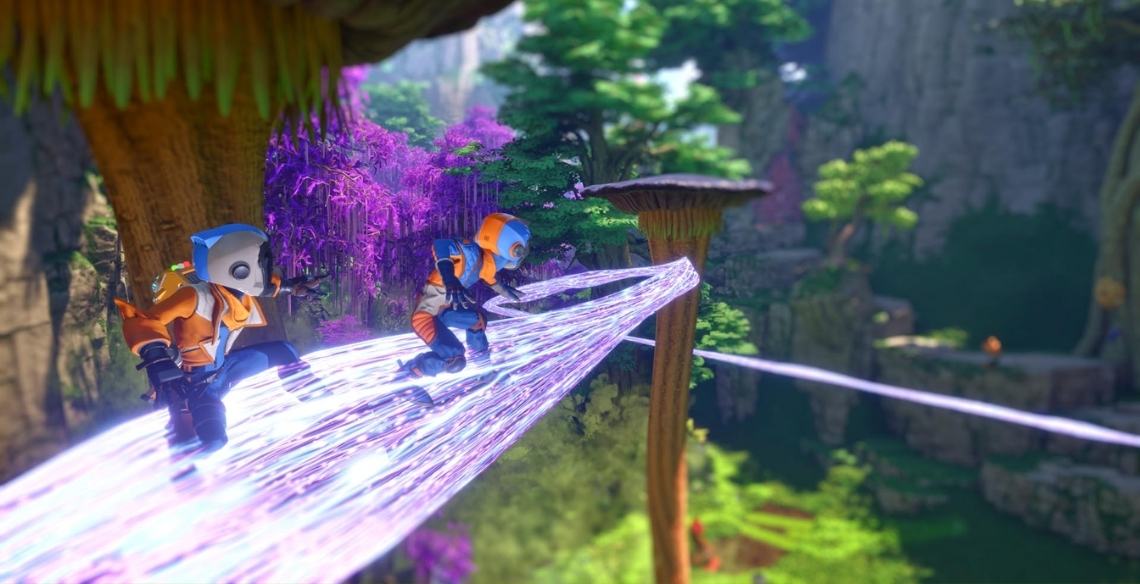
Revenge of the Savage Planet’s vibrant design makes every planet interesting. Every element is a hyperbole, and every creature an exaggeration of its inspiration. While the game’s platforming and traversal mechanics are enough to make me say that this is a day one pick-up, the game ensures that the player engages with its environments in different ways. While you can do combat with the creatures and gain important resources to 3D print new tools and update existing armor and other abilities, you can also make creatures your pets.
With research at the heart of what you’re trying to do, each planet builds a new research station in your little Habitat. Here is where you build your living museum. By using the electric whip, a new addition to your kit this go-around, you lasso creatures and house them in your Habitat in the appropriate research modules. For smaller creatures with few defenses, or the more passive ones, all you need is the lasso. Aggressive creatures, though, take some time. Players have to shoot vulnerable spots revealed by the survey, too, until it’s stunned (or spray it with water).
Once in your Habitat, the creatures can be researched to earn new color palettes and unlock new upgrades. While plenty of ways exist to have a collectathon and scratch that 100% exploration itch, there is an active reward for engaging with every level of the game. Exploration allows you to collect valuable items to keep printing new equipment, upgrade your stamina and health, or even just find more cash (in the form of ATLA only coupons) to furnish your Habitat.
This last bit is an additional and completely optional way to interact with the game. For those who love decorating, this will hit the right spot. But if you don’t, you won’t miss out on any game progression—unless, of course, you’re working through optional DLC quests that put you on a sci-fi version of Cribs. Still, even though it’s not necessary, it is fun.
Co-op is a zap of chaotic joy on which the game thrives.
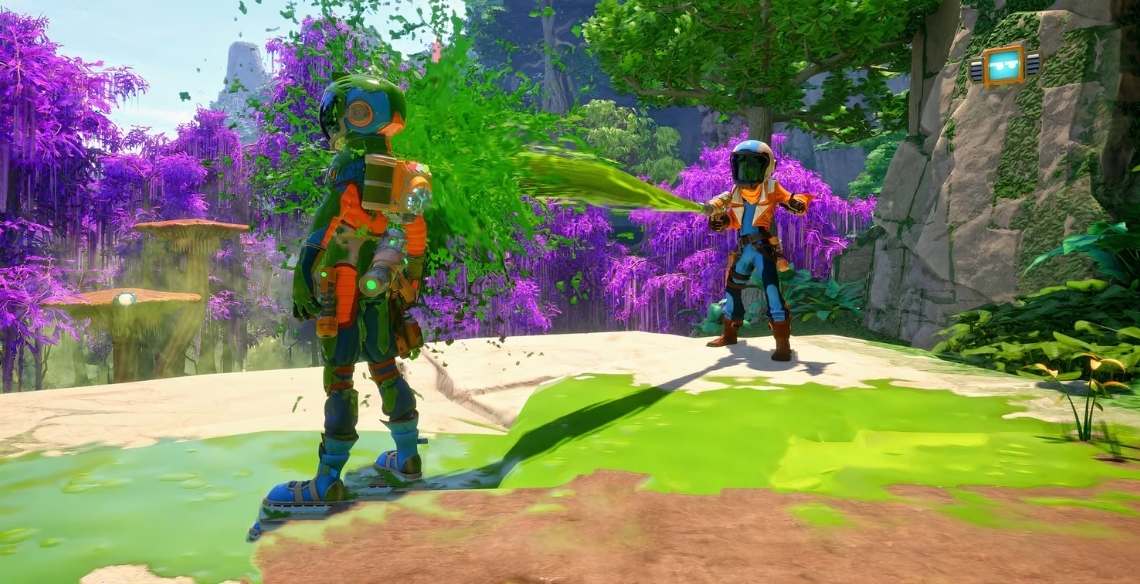
Revenge of the Savage Planet’s game loop is larger than its predecessor, but it’s never grinding in a way that makes you tap out. Instead, the depth of the loop is what keeps you locked in. To put it simply, this sequel takes everything that the last game did well and adds a grandeur to it that absolutely works. There is more creativity, more depth, and more dynamic mechanics to boot.
One of the largest changes from the first game is the choice that Raccoon Logic made to move from first-person to third-person. Creative Director Alex Hutchinson explained to us in an interview that the choice was made to facilitate better co-op.
“We did that through the big push for third person. Third-person ends up being more accessible. VR struggles with this, too, but there are some issues with how your brain processes first-person and all that sort of stuff. So I think [third-person perspective] is more accessible,” Hutchinson said. And it really does. While playing online co-op, the difference allows you to handle more complex platforming puzzles individually. For couch co-op, a new feature of Revenge of the Savage Planet, third-person is necessary.
Much like online co-op, couch co-op doesn’t restrict players to being in the same area. This allows you to explore on your own while not being tethered to the other person you’re with. While you are restricted to one planet, the freedom that is given to the main scientist (host player) and the Meat Copy (second player) is not only well-thought-out, but executed in a way that understands the needs of co-op players.
While I will always have issues with simple drop-in/drop-out co-op because it forces two people to play all on one save or start over from scratch, this co-op experience is well managed. This goes right down to how much you’re allowed to interact, disrupt, and cause chaos to your partner. Sure, this can accidentally blow you up or knock you off a platform, but it can also disrupt taming an animal and give you the satisfaction of kicking your co-op partner in the back when they’re being annoying.
Revenge of the Savage Planet has dynamic platforms, tactile puzzles, and a lot of weirdness that works.
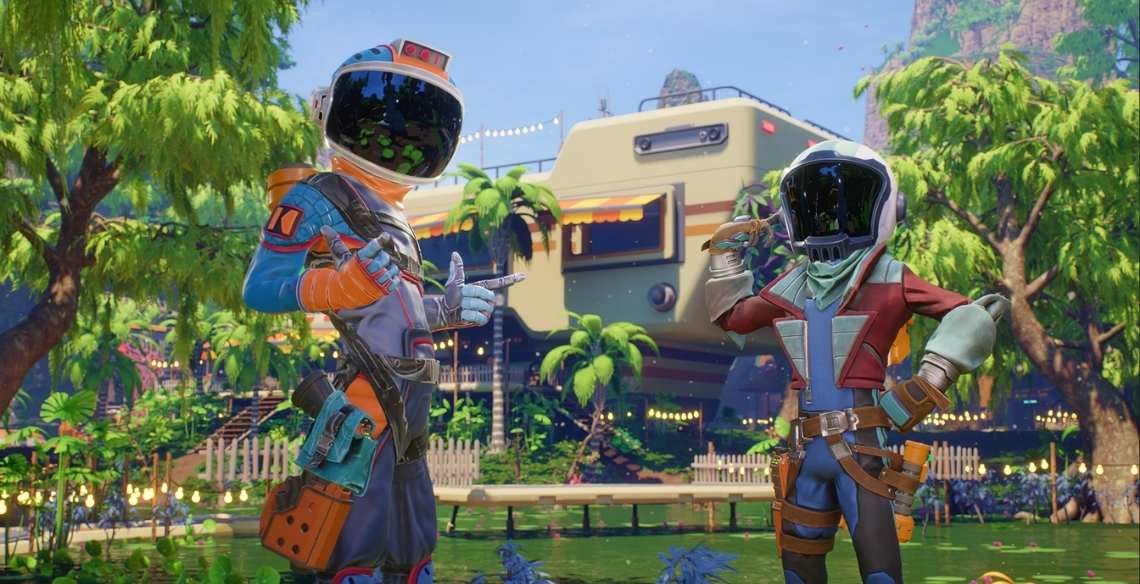
Revenge of the Savage Planet’s co-op taps into a chaotic joy that works perfectly. The effortless humor and fantastic level and puzzle design make this a game that you can’t put down. The game also adds a bevy of customization options for your character. You can explore and find new suit cosmetic items and unlock color palettes to give your scientist (or Meat copy) a personality. This small detail goes quite a long way when you start interacting with optional challenges or enter the few cutscenes you see in the game.
The only factor weighing against it is minor optimization issues. During our playthrough (which was done all co-op), the Meat Copy character kept falling through the map, leaving their items to spawn far away, but I guess at least they spawned. The other issue is the responsiveness to interacting with objects. With multiple actions being tied to one button and dependent on how you’re facing an object and whether there’s a prompt, using the X button on a controller can get slightly frustrating. Still, neither of these things soured the experience for too long.
Revenge of the Savage Planet is a testament to building on a solid foundation and letting creativity lead the way. Whether it’s the puzzles, the platforming, the creature design, or the ace comedic dialogue, this game delivers in every single way. Co-op or solo, it’s just pure joy, and it comes from a satirical take on working that hits close to home.
Catch up with our review of Journey To The Savage Planet and its DLC.
Revenge of the Savage Planet
-
Rating - 9/109/10
TL;DR
Revenge of the Savage Planet is a testament to building on a solid foundation and letting creativity lead the way. Whether it’s the puzzles, the platforming, the creature design, or the ace comedic dialogue, this game delivers in every single way.

